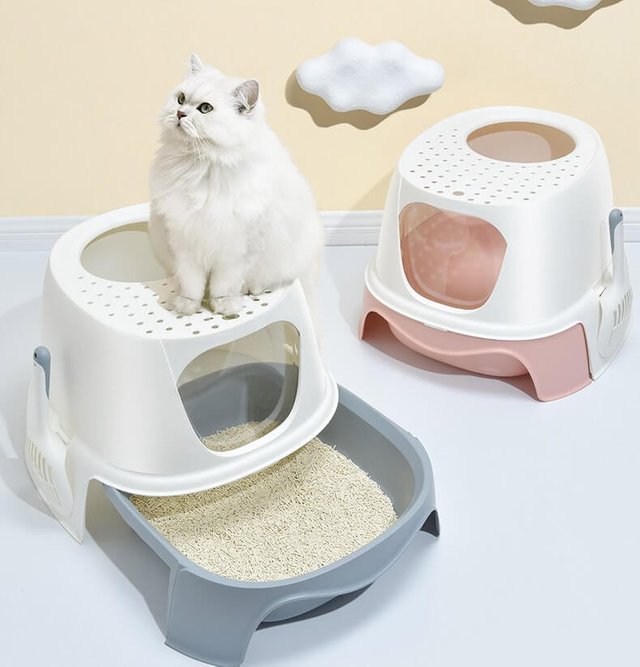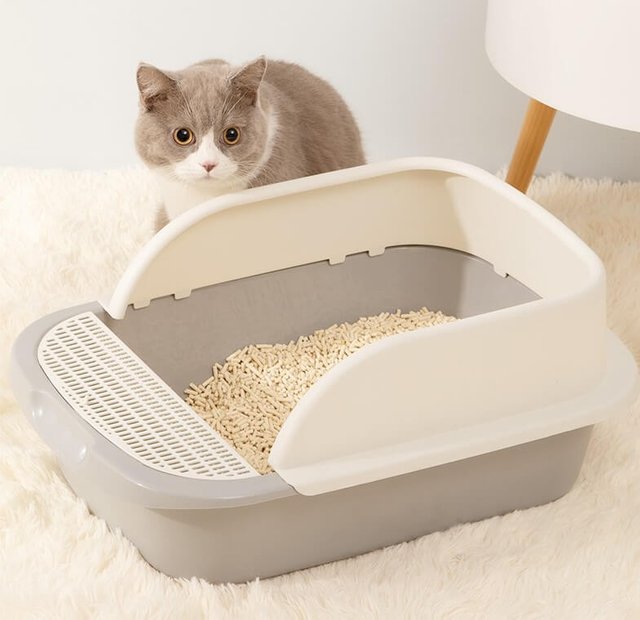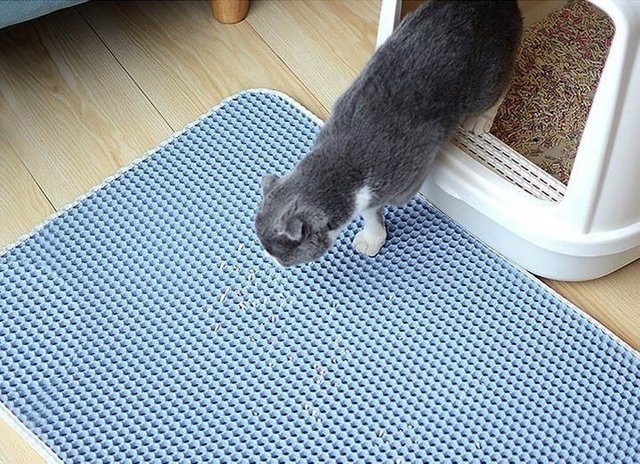Choosing a Place for Your Cat’s Litter Box

The litter box is a sacred sanctuary for all cats. Choosing a fitting location for your cat’s litter box may seem like a trivial task but there are several things to consider beforehand. Placing a litter box into any free space might seem ideal but your cat might have other ideas about their ideal pit stop. It’s important to strategically locate the litter box in the right place to avoid potential issues for both cat and owner down the road.
An important part of litter box placement is to ensure that it’s not put near your cat’s food or water bowl. Cleanliness is essential to cats and having a box meant for urine and excrement near yummy dishes is definitely unapproved. They may avoid using the litter box entirely in this situation and decide to go elsewhere for their necessities, most likely an undesirable spot in the house.
Placing the litter box in a convenient and familiar environment is important. Your cat needs to feel at ease when visiting the litter box, a secure and peaceful environment is essential to achieving the ideal placement. Privacy is appreciated, a quiet room out of the way is a good idea but this shouldn’t be a place that is hard to access or keep watch over. As a responsible owner, you’ll need to check and clean the litter box on a regular basis. Picking a quiet and accessible area will benefit both owner and cat. Make sure to regularly check their urination and defecation behavior as it is often a first sign of early disease detection.

Place your cat’s litter box in a quiet and secure place to give confidence. Away from disruption, visitors in the home won’t impact your cat’s visits to the lavatory. Sudden or constant disturbance can cause your cat to halt urination, sometimes for extended periods. Prolonged holding of urine can lead to urinary tract infection or even kidney failure.
Examples of ideal locations would be a bathroom, en-suite bathroom or other spare room that is cool and quiet. Placing litter boxes next to noisy washing machines isn’t recommended and it’s best to avoid rooms that get damp or extremely toasty. If you have other pets such as dogs, it’s best to isolate access to the litter room and ensure that they can’t disturb your cat when it goes to the litter box. A covered litter box works very well and keeps things tidier too.

For households with more than one cat, things can get busy. It’s important to prepare sufficient litter trays for your numerous cats. Placing them in different rooms and perhaps on different floors will help spread toilet action. Multiple litter boxes is also a matter of convenience. For cats that struggle with mobility such as senior kitties, it’s helpful to have a litter box nearby at all times. More choices and better accessibility decreases the likelihood of accidents.
Litter boxes will inevitably introduce some mess now and then. Tracking litter around the house is a major issue that cat lovers face and we recommend picking up a cat litter mat to prevent litter from being taken elsewhere in the household.
Once you’re set on a location for your litter box or two, it’s time to seal the deal with a kitty seal of approval. Your cat will remember the location of the litter tray and it’s best to leave the box in the same location for weeks to come. Avoid moving from place to place as confusion can ensue. A stable location will help your cat remember where they need to go in their time of need. In cases where location changes are needed, it’s best to actively encourage your cat to familiarize itself with the new placement and ensure no further changes are to be made.
Images used in this post are taken from sources that require no attribution
Visit - https://aipaws.com

 Steem
Steem  Twitter
Twitter  YouTube
YouTube
 Instagram
Instagram Pinterest
Pinterest Facebook
Facebook